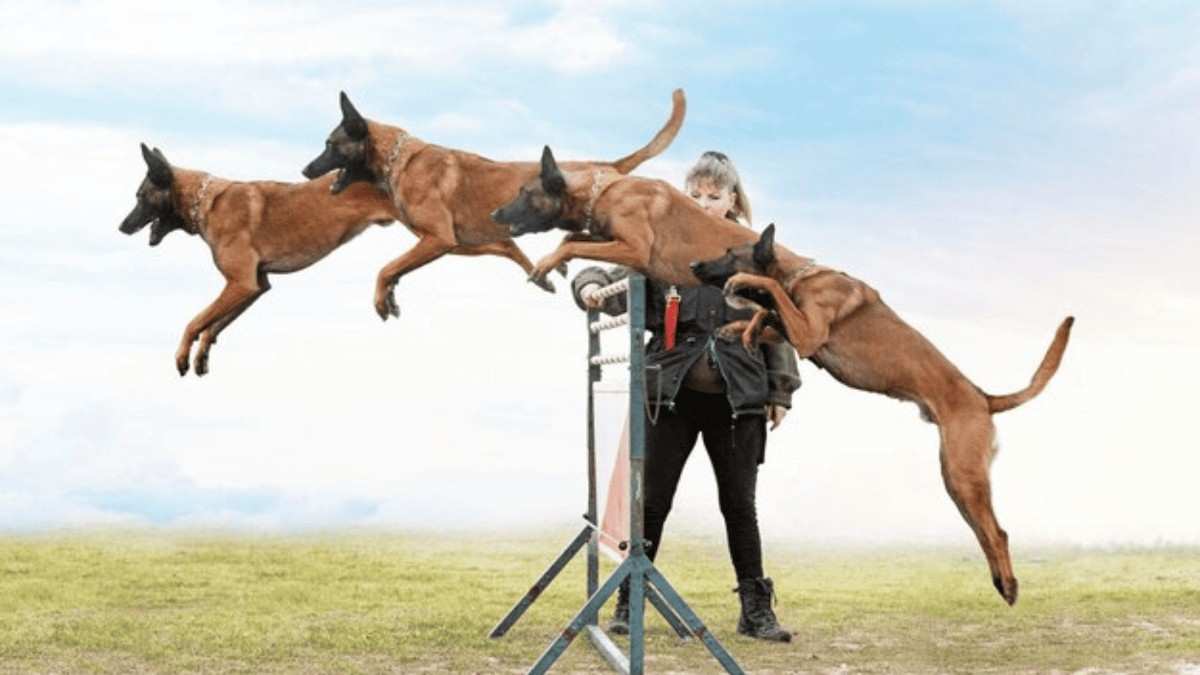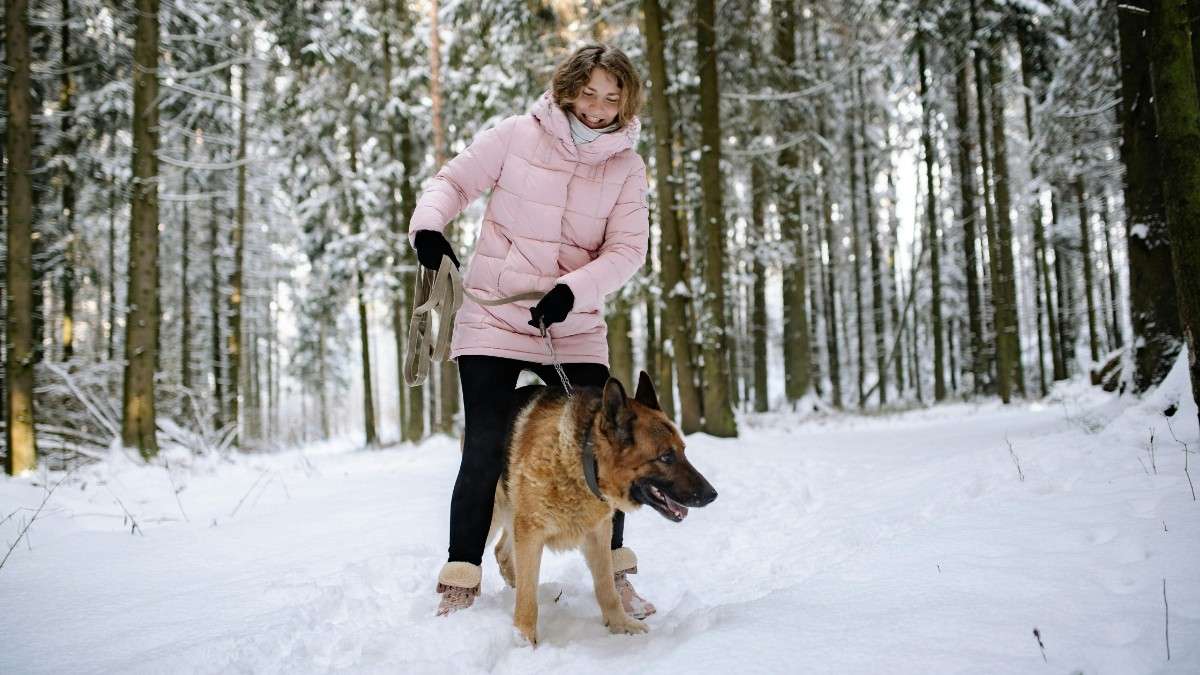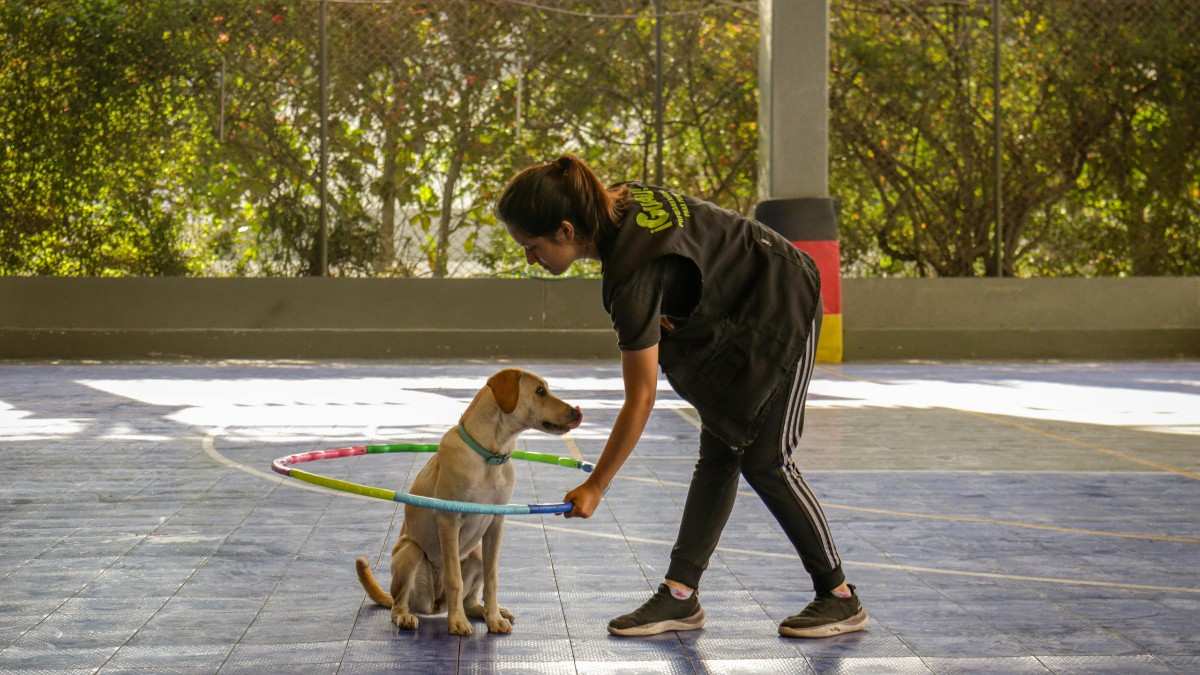How to Manage the High-Energy Lifestyle of Working Dogs
The High-Energy Lifestyle Working Dogs are bred for tasks that require stamina, focus, and quick decision-making. These tasks could range from herding livestock, pulling sleds, guarding property, or aiding in rescue operations. Breeds like the Border Collie, German Shepherd, and Belgian Malinois have been selectively bred for their work ethic, which means they require a significant amount of physical and mental engagement.
The High-Energy Lifestyle of Working Dogs is rooted in their natural instincts to perform tasks and engage their minds. Simply put, these dogs are hardwired for action. Without proper outlets for their energy, they can become bored, anxious, and may even develop behavioral issues. Understanding this is the first step in effectively managing their needs.
Daily Exercise Routines for Working Dogs
A working dog’s physical energy needs are higher than that of many other breeds. Exercise is essential for maintaining their health and preventing them from becoming restless or destructive.
Importance of Physical Exercise
- Physical exercise helps burn off excess energy.
- Regular exercise contributes to muscle tone and overall health.
- Dogs with more energy require longer walks, runs, or vigorous play sessions.
Types of Exercise That Suit Working Dogs
- Daily walks or jogs: At least 60 to 90 minutes a day, depending on the breed.
- Off-leash play in a secure area: This allows dogs to run freely and engage in natural behaviors.
- Interactive activities: Games like fetch, frisbee, or tug-of-war help them expend energy in a fun way.
- Agility training: Many working dogs thrive in agility courses that challenge both their body and mind.
Consistency is Key: Routine is essential for high-energy lifestyle of working dogs. Regular exercise schedules help manage their energy levels effectively and ensure that they remain calm when indoors.
Mental Stimulation: Keeping Their Minds Active
Physical exercise is important, but mental stimulation is equally vital. Working dogs are highly intelligent and need tasks that challenge their minds to prevent boredom.
How Working Dogs Benefit from Mental Challenges
- Mental stimulation can tire a dog out just as much as physical exercise.
- Prevents destructive behavior stemming from boredom.
- Strengthens the bond between the dog and owner.
Ideas for Activities That Engage Their Minds
- Puzzle toys and treat dispensers: These toys require dogs to figure out how to get a treat, providing mental stimulation.
- Training sessions: Basic obedience training or teaching new tricks can keep your dog’s brain active.
- Scent work: Hide treats around your home or yard and let your dog search for them. This taps into their natural instincts and provides an excellent mental workout.
Training Techniques to Manage Energy
Training is a powerful tool to manage the energy of working dogs. Not only does it help with behavior, but it also provides a sense of purpose for the dog.
The Role of Training in Energy Management
- Training helps redirect excessive energy into positive actions.
- Working dogs thrive when they have a sense of purpose and direction.
Effective Training Methods
- Positive reinforcement: Reward your dog for desired behaviors, such as calmness or focusing on a task.
- Redirection: If your dog starts to get overly excited, redirect their energy into a game or task.
- Calmness training: Incorporate calm behavior into their daily routine. Teach them to settle and relax in a designated spot.
Creating a Safe and Stimulating Environment
Your home and yard should support a working dog’s need for activity and mental engagement. Creating the right environment can help keep your dog happy and healthy.
How to Design Your Home and Yard for an Energetic Dog
- Ensure your yard is secure so your dog can safely roam and play.
- Use interactive toys and obstacles to create an engaging space.
- Set up a designated training area or agility course for mental and physical challenges.
Using Toys and Enrichment Activities
- Rotate toys regularly to keep your dog’s interest.
- Introduce new challenges, such as teaching your dog to navigate tunnels or jumps.
Socialization and Interaction with Other Dogs
Socializing your dog with other animals and people is essential for their well-being. Many working dogs benefit from interaction with other dogs, as it provides an outlet for energy.
The Importance of Socializing Working Dogs
- Promotes positive behavior around other animals.
- Prevents behavioral issues like aggression or fearfulness.
- Provides opportunities for play and stimulation.
Recognizing the Signs of Overexertion
While managing energy is essential, it’s equally important to know when your dog is overworked. Overexertion can lead to fatigue, injury, or stress.
Signs of Overexertion
- Excessive panting or drooling.
- Lethargy or reluctance to exercise.
- Behavioral changes like irritability or restlessness.
Be mindful of these signs and adjust your dog’s exercise routine to avoid burnout.
Tips for Managing Energy in Different Life Stages
Working dogs have varying energy levels depending on their age. Puppies have boundless energy, while senior dogs may require more rest.
Adjusting Exercise for Different Life Stages
- Puppies: Focus on socialization and light exercise to build strength and stamina.
- Adult dogs: Regular exercise and training to maintain their energy levels.
- Senior dogs: Lighter, low-impact activities like walks or gentle play to keep them active without overtaxing them.
Final Thoughts
Managing the high-energy lifestyle of working dogs is a rewarding challenge that requires understanding, consistency, and engagement. By incorporating regular exercise, mental stimulation, and proper training, you can ensure that your working dog leads a healthy, happy, and well-balanced life. With patience and dedication, you’ll not only help your dog channel their energy in positive ways but also strengthen the bond between you both.
Frequently Asked Questions (FAQs)
Q1. What defines a working dog breed?
Working dogs are breeds originally developed to perform tasks like guarding, herding, pulling sleds, or search and rescue. Examples include the German Shepherd, Border Collie, and Siberian Husky.
Q2. Why do working dogs need more exercise than other breeds?
These dogs are bred for stamina and purpose-driven activity, making them naturally more energetic and mentally alert.
Q3. How much daily exercise does a working dog need?
Most working dogs need at least 1.5 to 2 hours of physical activity each day, including walks, runs, and interactive play.
Q4. What are good activities for high-energy dogs?
Great options include agility training, fetch, swimming, tug-of-war, hiking, and obedience or scent work.
Q5. How can I mentally stimulate a working dog?
Use puzzle toys, training sessions, snuffle mats, or task-based games to keep their minds sharp and engaged.



Post Comment